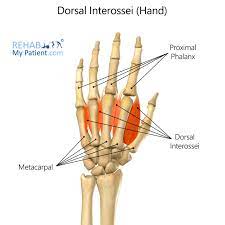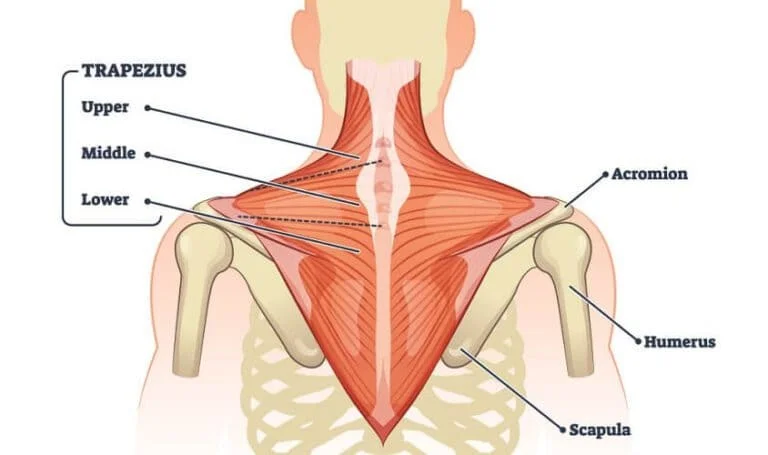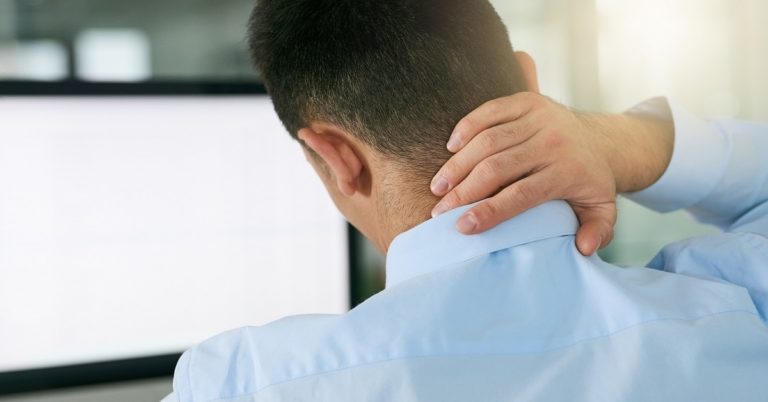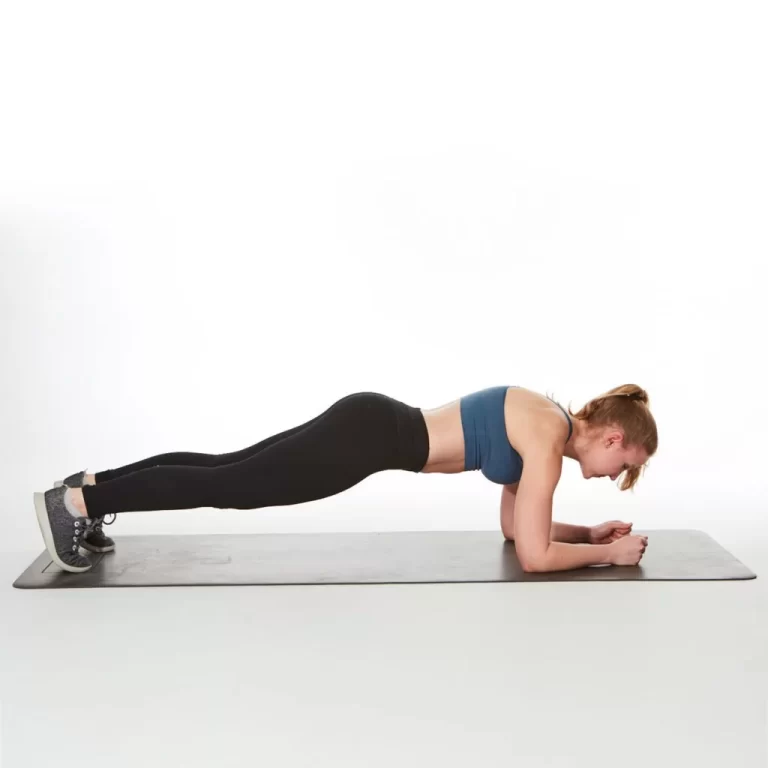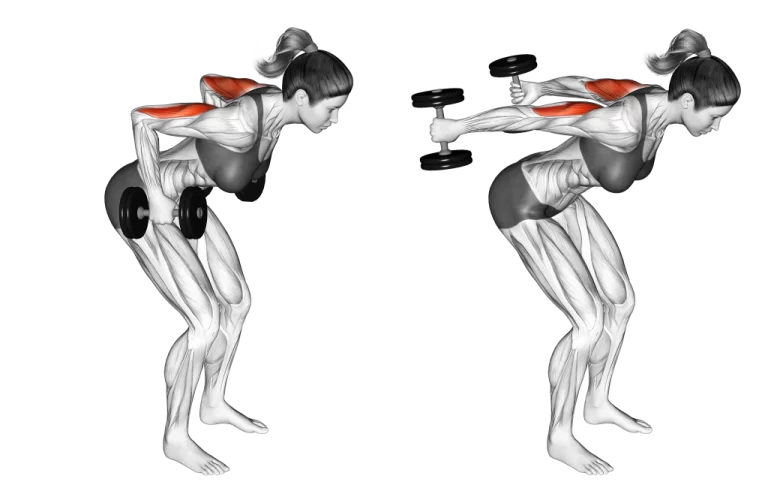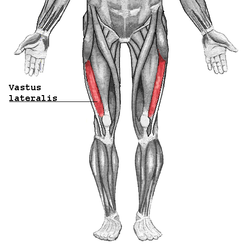Dorsal Interossei of the Hand Muscle Exercises
Strengthening the dorsal interossei muscles in the hand can improve finger dexterity and grip strength. Try exercises like finger spreads, rubber band exercises, finger abduction with resistance, finger extension with resistance, and finger spring exercises.
Table of Contents
General information
The dorsal interossei of the hand are 4 muscles on the posterior surface of each hand. There are 4 dorsal interossei muscles in each hand. These match the palmar interossei muscles that sit on the anterior side of the hand (palm).
Literal meaning
The word dorsal interossei translates from Latin as ‘muscle in the middle of the bones on the back’ (of the hand). Dorsal means back, inter means between, and os is bone.
Interesting information
- These muscles play a significant role in any sport that includes gripping with the hand, namely holding a bat or racquet.
- The dorsal interossei may be impaired and inflammation may occur because of repetitive use, seen specifically from extended hours of typing or writing.
- When there is inflammation or tenderness, an easy handshake may be hurting.
- By slowly squeezing the hands, or by limited adduction and abduction of the digits, damage may be tested.
- Treatment includes friction or massage therapy.
Origin and Insertion
| Muscle | origin | Insertion |
| 1st dorsal interossei | The medial side of the proximal end of the first metacarpal and lateral side of the second metacarpal | The lateral side of the base of the second proximal phalanx and the extensor expansion (Extensor Hood) |
| 2nd dorsal interossei | The medial side of the second metacarpal and lateral side of the third metacarpal | The medial side of the second metacarpal and the lateral side of the third metacarpal |
| 3rd dorsal interossei | The medial side of the third metacarpal and the lateral side of the fourth metacarpal | The medial side of the third metacarpal and lateral side of the fourth metacarpal |
| 4th dorsal interossei | The medial side of the fourth metacarpal and the lateral side of the fifth metacarpal | The medial side of the fourth metacarpal and lateral side of the fifth metacarpal |
Function
- The DI of the hand abducts the 1st digit, 2nd digit, and 3rd digit away from the hand’s midline.
- They also assist in the flexion of knuckle joints and extension of finger joints. The first dorsal interosseous assist in thumb adduction.
Nerve supply
All 4 muscles are innervated by the deep branch of the ulnar nerve (C8 and T1).
Blood supply
They get blood supply from many arteries including the dorsal and palmar metacarpal artery and branches of the deep palmar arch.
Assessment
- When the fingers are resisted from abducting in the middle of the metacarpals, the dorsal interossei muscles may be felt in the dorsum of the hand.
- Place the person’s palm flat on a tableland and request the person to abduct their 1st finger against the therapist’s resistance to test the 1st dorsal interosseous muscle.
- A trustworthy test for the ulnar nerve is the visible and palpable muscle belly.
Dorsal Interossei of the hand exercises
- If your hand and fingers feel stiff or painful, a person may warm them up prior to exercising by putting them in warm water for some time.
- A person may also use a heating pad.
Finger stretch

- These exercises help to elevate the ROM of the fingers and improve flexibility.
- Place the hand on a flat surface, with palms facing down.
- Gently straighten the digits as much as a person may without straining the joints.
- Hold for 2 minutes and then release.
- Do it again five times for each hand.
Finger Lift
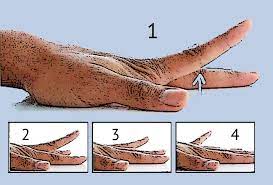
- Start with putting the hand on a flat surface, with palms facing down and fingers straight.
- Lift every finger up gently and lower it.
- A person can also lift all fingers simultaneously and lower them.
- Do it again ten times for each hand.
Isometric Finger Abduction Exercise
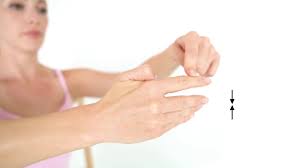
- Start with sitting erect in a seat.
- With the fingers level and the palm confronting, place the affected arm on a table.
- On the thumb side of the middle finger, put the
- 1st finger from the noninvolved hand.
- Try to move the middle finger toward the thumb while resisting the motion with the opposite hand.
- Maintain the palm and forearm flat on the table throughout the whole exercise.
- On the other finger, perform the same thing.
Isometric index finger abduction (1st dorsal interosseous)

- Start with sitting upright in a chair.
- Put the involved arm on a table with the palm facing down and the fingers flat.
- Put the index finger from the noninvolved hand on the thumb side of the affected finger.
- Try to move the affected finger towards the thumb, using the noninvolved hand to resist the motion.
- Remember to keep the palm and forearm flat on the table throughout the whole motion.
FAQ
The dorsal interosseous muscles are a bunch of paired intrinsic muscles of the hand situated at the midpoint of the metacarpals. They are made up of 4 dorsal muscles that abduct the digits. The dorsal interossei additionally help in the flexion of the MCP joints and extension of the IP joints.
Injury to the ulnar nerve may manifest as weakness or even atrophy of the interossei muscles and mainly occurs by nerve root impingement. brachial plexus compression. nerve entanglement at the elbow, forearm, or wrist.
Put the forearm and palm gently on the table and pull the thumb away from the digits gently. This stretches the 1st Dorsal Interosseous. Hold for about 20 seconds and release. Recognize to stretch the opposite side as well.
Of all the intrinsic muscles of the hand, the dorsal interossei are the most dorsally situated. The bipennate dorsal interossei are the primary abductors of the 2nd, 3rd, and 4th digits at the MCP joints.

